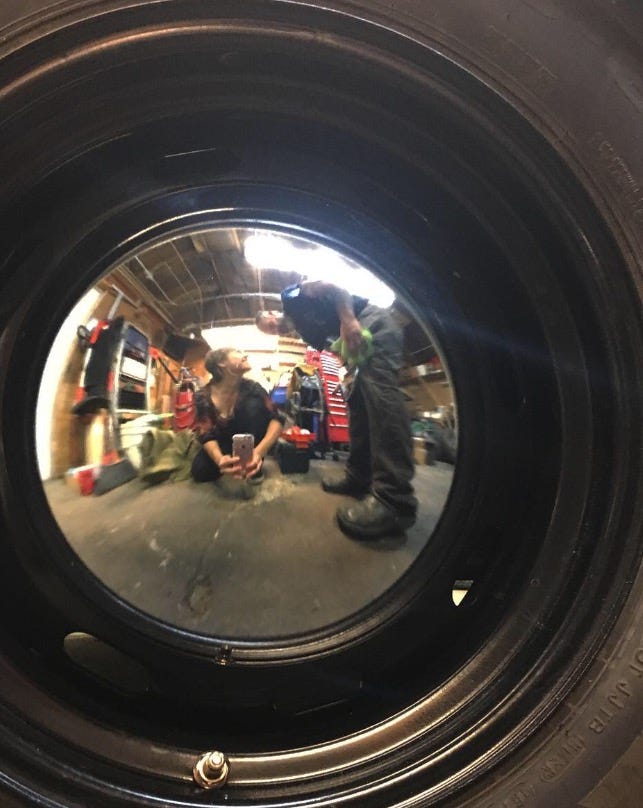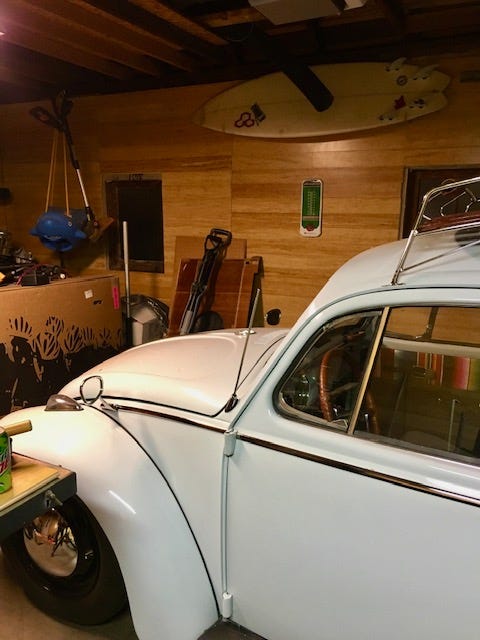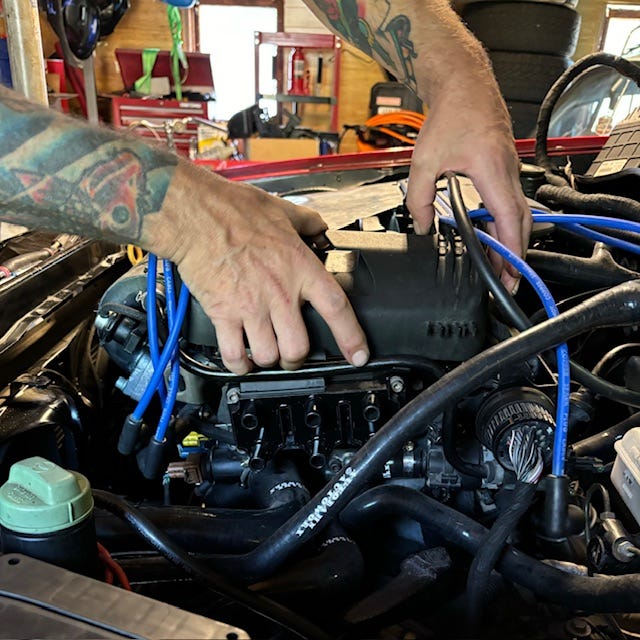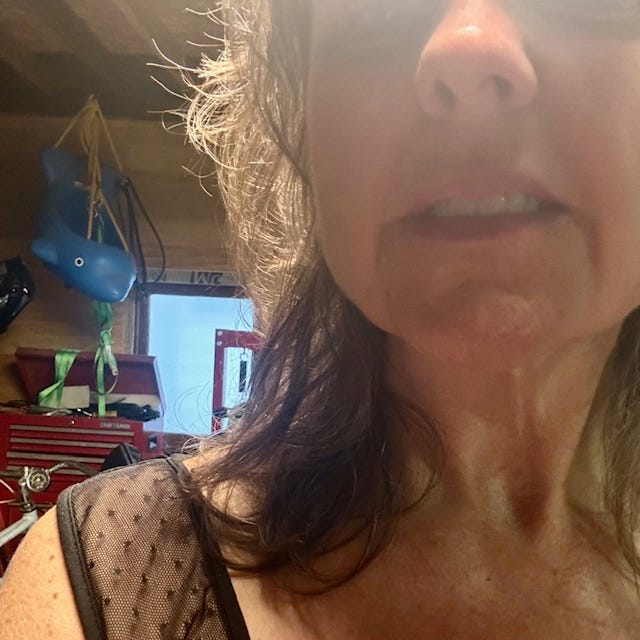A few weekends ago, a wiring harness branched its way across our dining room floor as Jim tried to find a short or break. A dendritic system of wires, all bundled together and wrapped into thickening limbs. It is the circulatory system of a car that also delivers electricity to the heart. Jim removed the harness from his VR6-swapped 1986 VW Jetta so he could work on the wires inside instead of in the garage during a week of intense heat.
The harness was spread on a large piece of cardboard, not haphazardly, but flayed and organized like a butterfly pinned to Styrofoam. It reminded me of uprooted prairie plants, cleaned of soil, drying in a clump of gnarls and joints. Or maybe it was more the roots of a tree, thick and ropey, not fine and fibrous.
During that same weekend, my sewing machine and fabric took up space on our dining room table. So as I sewed by the window, Jim was a few feet away on the floor unwinding, winding, unwrapping, and wrapping. In childhood development, I believe they call this parallel play. In a relationship, I call it the “ever-important activity of sharing space.” The garage had come inside for the evening, and so had Jim.
Before Jim, my garage was a pass-through. It’s detached, which is usual for homes a century old. Like the thumb from the separating thumb trick, it looks connected, but it’s really a free-floating entity all its own. The garage always felt both sterile and filthy, open but chock-full. And there was ever a chill or steam to it, never settling at a comfortable temperature. But when Jim moved in, his 1969 Beetle came with him, and he wanted to make the space more inviting to work in, so he added insulation and installed horizontal bamboo flooring, giving the entire garage a warm vintage glow reflected from the pale golden hue of the grass that looks like wood.
I know more about cars than I used to, but when Jim and I first started dating, I knew next to nothing. But I knew I was intrigued by the curves of a car’s body and her mysterious interiors, so I began documenting. Photographing Jim’s car reminded me of photographing a few of my girlfriends in the nude. I’d revolve their bodies for the strangest angle or just click pics in their relaxed and reclined state. But it’s more than just photographing the car, it’s capturing the whole essence of the garage.
This summer, I walk out our backdoor and latch it tightly behind me to keep out bats and bugs. As soon as you step onto the stoop, you can see directly into the open side door of the garage, view the way the light shafts out to mingle with evening or maybe to interrupt night’s coming. Music accompanies the light out the door because the garage is never silent; it’s full of Cave In, Rival Schools, Quicksand, Young Widows, Doomriders, Telekinetic Yeti, and Fu Manchu, with the supportive percussion of metal hitting metal.
To get to the garage, you walk past our narrow garden where the stargazer lilies have gone through their bloom cycle, and now the cannas erupt from behind the tomato bushes that have extended their limbs nearly six feet to perch on shepherd’s hooks and sunflower stalks. Going to the garage is meditative in its otherworldliness; it feels like going foreign. I squeeze into its confinement and am immediately cozy. Smells change depending on the task at hand. When Jim was working on the fuel pump, the smell of gasoline brought back memories of speedboat summers. The heat and humidity of late saturates all the smells, so now it’s a blend of vintage velour and metal’s specific scent of hard sweat from a clean armpit.
Jim works while I linger and photograph; few words pass between us. Sometimes I am his assistant, bleeding brakes or turning over the engine as he checks connections. The last time I helped, I entered the garage and said kindly and clearly, “Do you remember the one thing I require when helping you with the car?” Jim didn’t even smirk, he looked intently into the engine with a look of focus, then turned to me and said, “You need clear communication.” Perfect! I nestled into the car that night next to the handlamp that was my nightlight in the steel treehouse held up by four jack-stands.
The weekend the wiring harness grew in our dining room, Jim would squat alongside the roots and show me where each wire led and what its function was. Core muscles and quads from his history of racing bikes down mountains allow him to stand up with the deliberateness of a hydraulic lift but more swift.
“Man, those wires look complicated,” my words were ones of respect.
“It’s just tracing a vein,” he said, with a matter-of-factness that made him unaware of his own poetry.
Tracing a vein.
Like a finger outlining the blue river of another’s wrist?
Like a tongue trailing the dorsal vein of a shaft?
Like floating the memory vessel of the brain’s nostalgic canal?
I trace a vein every day from home to the place where I find Jim, immersed in music and concentration, to sit or chat or document.














The love a poem exudes.
Your writing and your photography are alike. Lovingly crafted and it’s important to look deeply especially at the reflections. Love this.